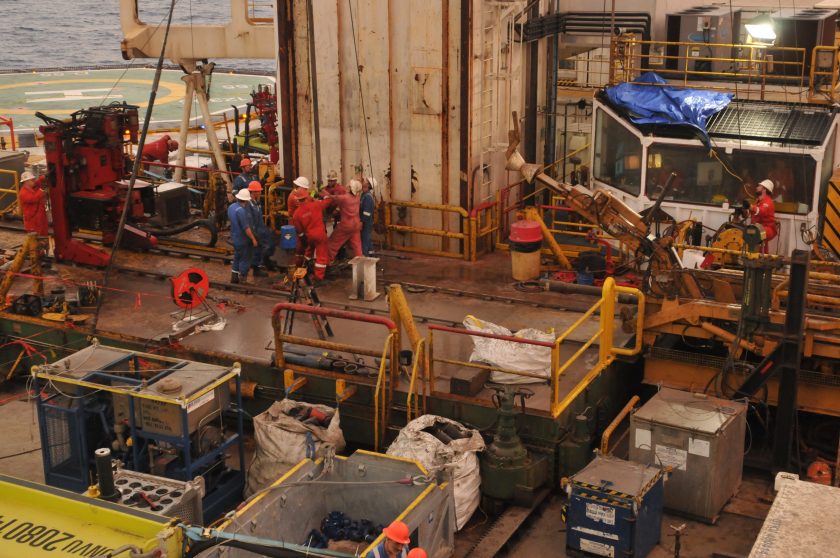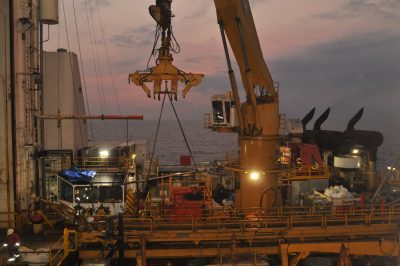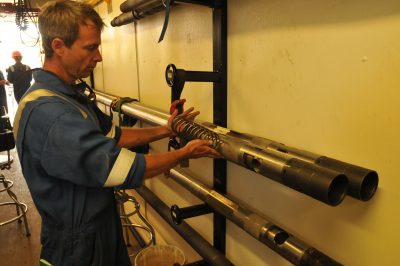Working the Bugs Out
May 13, 2017

This is the third post in a series on the Jackson School-led mission to drill for samples of methane hydrate from under the Gulf of Mexico for scientific study. Read the second post here.
Gulf of Mexico – It was a bit of a rough go Friday night and Saturday morning on the Helix Q4000. The crew took runs at collecting the first three cores, but none of them worked as hoped.

The first two attempts succeeded in bringing back core samples, but neither were fully pressurized. In one instance, at least one of the dozens of seals in the tool that collects the cores did not work properly. In the second instance, the all-important ball valve that needs to close at depth to properly seal the pressurize core did not close all the way.
The third attempt at collecting a core posed a real problem. The coring tool became stuck for hours as the crew tried to pull it back up the drilling string. After many attempts and just before the team decided to pull the whole drilling string up (a move that would set the schedule back substantially), the crew was finally able to pull the coring tool back to the surface at around 3:45 a.m.
The technical difficulties were disappointing but not wholly unexpected. One of the main goals of the scientific mission is to work through the technical aspects of retrieving a core from more than 8,000 feet below the surface of the sea and returning it to the deck under high pressure.

The tool being used is called the pressure core tool with ball, or PCTB for short. It’s basically a long tube that is lowered within the pipes of the drill string and pulled up the same way after it has retrieved a sample. It’s capable of retrieving core samples about 10 feet long. The scientific team is testing two configurations of the tool to determine which is better for the job.
To help pioneer this sampling method, the science team has turned to Geotek, a firm that designs and manufactures geological equipment and specializes in scientific drilling missions. Geotek technicians are working on the tool nonstop. Later today the team will conduct a test with the PCTB tool, running it down the drill string and capturing sea water before returning it to the surface. This will help determine if they’re able to get the tool to perform properly at depth.
Anton Caputo, Jackson School Communications Director
